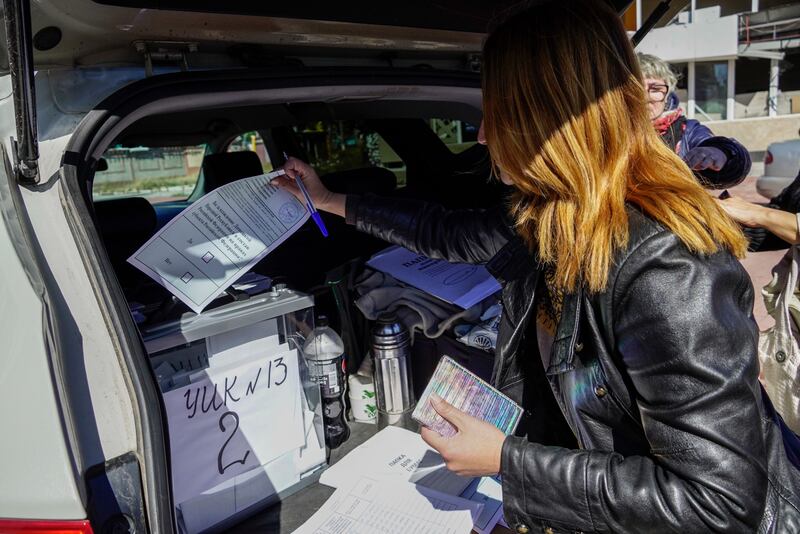Political and military leaders in Ukraine have discussed plans to liberate more of its territory, as Russia prepared to annex occupied areas of its neighbour’s land and pledged to use all weapons at its disposal to stop Kyiv taking them back.
Moscow is expected to announce on Tuesday that overwhelming majorities in occupied parts of the Kherson, Zaporizhzhia, Donetsk and Luhansk regions of Ukraine voted to join Russia, in sham “referendums” that are illegal under Ukrainian and international law.
The five-day “vote” was hastily launched last week along with the mobilisation of 300,000 Russian reservists, which has led to thousands of men fleeing abroad, protesters clashing with police, and a recruiting officer being shot on Monday in a Siberian draft office.

Ukrainian president Volodymyr Zelenskiy met government ministers, military top brass and the heads of his security agencies to discuss “the operational situation on the front line.”
“Decisions were made regarding active operations of the defence forces to further de-occupy the territory of Ukraine,” Mr Zelenskiy’s office said in a statement.
Separately, he revealed that two more mass graves had been discovered in the recently liberated town of Izyum in the northeastern Kharkiv region, where about 430 bodies were exhumed from a burial pit last week. Ukrainian officials say dozens of the bodies appeared to show signs of torture.
A Ukrainian counteroffensive drove Russian troops from Kharkiv region this month and continues to make slow progress in the southeastern provinces of Kherson, Zaporizhzhia and Mykolayiv.
Kyiv vows to continue the operation, regardless of Russia’s attempt to change the momentum of the war by drafting hundreds of thousands of soldiers, preparing to annex more Ukrainian territory, and threatening to use its full array of weaponry to keep hold of those areas, while repeatedly reminding the West that it possesses a huge nuclear arsenal.
Western powers have denounced the Kremlin’s thinly veiled nuclear threats and said they would not weaken their support for Kyiv, while Washington warned of “catastrophic consequences” for Russia if it used nuclear weapons in Ukraine.

Russian state media has said the country’s parliament may debate annexation of occupied parts of Ukraine as soon as Thursday, amid widely unpopular and somewhat chaotic attempts at “partial mobilisation” of military reservists.
Thousands of Russian men of fighting age have tried to flee the country, clogging up airports and border crossings, and monitors report that about 2,500 people have been arrested in protests against mobilisation. Some of the most volatile demonstrations have taken place in the Caucasus republic of Dagestan, where policemen have clashed with local men and been lambasted in streets and squares by local women.
A man shot and seriously wounded the head of a draft office in the Irkutsk region of Siberia on Monday, and in the city of Ryazan south of Moscow, a man set himself on fire and said he did not want to fight in Ukraine. Recruitment centres and administrative buildings in several Russian towns and cities have been attacked with petrol bombs in recent days.
Ukrainian officials warn that Moscow intends to draft residents of occupied territory into the Russian army once it has rushed through its annexation process.
Ivan Fedorov, the legal Ukrainian mayor of Melitopol who is no longer in the occupied city, said Russian appointees there planned to form a so-called volunteer battalion comprising 3,000 men by October 10th.
“But we realise that this is not a volunteer battalion – it will be people who will be forcibly mobilised and forced to fight against the Ukrainian people,” Mr Fedorov said.














